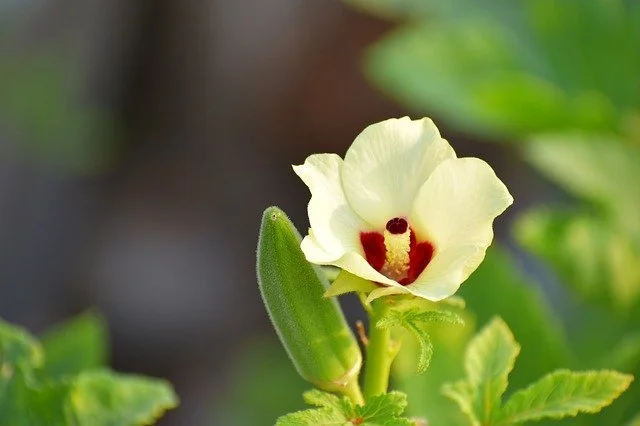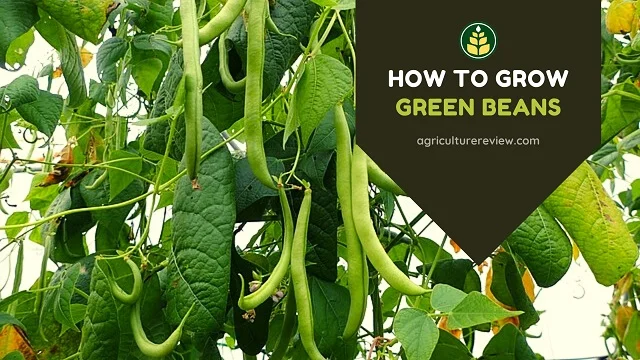This ultimate guide on how to grow okra will help you to grow and care for okra plant. Learn best practices for getting higher yield.
Table of Contents
परिचय
Lady’s finger (Abelmoschus esculentus) या Okra or Bhindi is a फूलदार पौधे. Growing okra is easy. It is cultivated for its edible green seed pods. Okra is one of the important vegetable crops of the world.
Okra plants are grown in Tropical, Sub Tropical and warm temperate climate.
It is an perennial crop but is cultivated as an annual crop. Okra grows about 3 to 4 meters tall. Okra plants have a long and broad leaves with 4-5 lobes with white and yellow flower.
If you don’t have an outdoor garden space, you can grow the lady’s finger in your rooftop garden or open balconies. This will also help in protecting your plant from pests and bad weather.
How To Grow Okra?

Selection of seeds
Select the best quality dwarf varieties seeds as they grow compact suitable for pots. Purchase it from the nearest seed store or online. I suggest buying seeds from a trusted supplier.
Growing season
Summer is the best season for growing okra. You can grow okra in plant hardiness zones 6, 7, 8, 9, 10, and 11. Start sowing of seeds during spring season. However you can also sow seeds during late summer season to grow okra.
गमले का चयन
If you want to grow okra in a container, choose a container with 6 feet long, 3 feet broad and 1 feet depth. You can also grow it in a growing bag (6inch diameter/12-inch depth.) Choose black colour bags or container. Because lady’s finger plants are heat-loving and black colour absorbs heat.
Growing containers should have a good draining system with at least 2-3 drainage holes.
Potting mix
Prepare potting mix with 60% loamy soil + 25% organic compose + 10% coco peat + 5% sand. Now fill the container with a potting mix leaving a 1.5-inch distance between the potting mix surface and rim of the container.
Sowing of seeds
Okra is grown twice a year in the plains for green pods. For early crop the seed is sown from February to April and for the late crop in mid-May to July. For better germination soak seeds in water overnight the day before planting.
You can propagate seedlings in the germination tray. The best method of propagating a lady’s finger is through sowing directly in containers or growing bags. Sow seeds about 0.5-1 inch deep at a spacing 6 inches apart within rows. Rows should be 12-18 inches apart.
Now wet the soil but do not overwater. To speed up germination you may cover it with transplant polythene. Keep the soil in the bed consistently moist until seed germination. Seeds take 5-10 days to germinate depending on climatic conditions.
Okra Plant Care

सूरज की रोशनी
Place your container where okra plant can receive at least 5-7 hours direct sunlight. Because okra prefers hot humid and full sunlight exposure for better yield.
मल्चिंग
Apply a layer of mulch 1-2 inches high when seedlings are 6 inches tall. Before mulching eliminate weeds properly. Mulch with chopped straw. It controls from further weed infestation problems and helps in retaining soil moisture and hot humidity.
पानी
Okra plant requires a good amount of water to thrive. Keep the soil moist constantly. Okra needs more water during flowering to the fruiting period. In peak summer seasons water the plants twice in a day. Keep in mind that water logging in container may infect your roots. That’s why take good care of drainage in the pot.
खाद
To establish your young plants use nitrogen-rich fertilizer. Use NPK (10:10:10) ¼ teaspoon per plant in every 15 days. You can also use any bulky organic manure instead of inorganic fertilizers. I prefer using vermicompost या leaf manure. Start applying fertilizers when plant reaches 6-8 inches in height.
Lady’s finger plant reaches 3-4 feet in 2-3 months and start blooming. Okra have self-pollinated flowers so no need of worrying about pollination. Pods appear in 6-7 days after flowering. During the flowering period side-dress the plants with organic manure compost to increase fruiting.
कीट और रोग
Keep an eye on young plants, they can be attacked by leaf-eating insects. If you notice any eaten leaves, pick them immediately and throw away. एफिड्स or other pests can be treated by spraying neem oil or horticulture oil. उपयोग organic fungicide for all the fungal diseases and nematodes.
Ant climb up plants to steal sips of nectar can also cause a serious problem. Spray insecticidal soap with regular intervals.
फसल की कटाई
The crop is ready to be harvested in 60 to 90 days after transplantation when pods are 2-5 inches long. Use scissors and wear gloves while harvesting the lady’s finger as the small thrones on the leaves and pods of plants can irritate the skin. Regular harvesting will increases the pod production.
Prune the bottom leaves of the plant after the first harvest, this increases the yields. Harvest the pods when they are tender soft and fresh.
Benefits Of Okra
Okra has high levels of Vitamin-A, Vitamins- B1, B2, B6, and the trace of zinc and calcium, making it an ideal vegetable to eat during pregnancy.
It also serves as a supplement for fibres and folic acid. This helps prevent birth defects like spina bifida and can even stop constipation during pregnancy.
Okra is good for eye and healthy skin.
It helps in the production of RBC and increases immunity.
Okra helps in weight loss and good for Diabetics patients.
Okra gives relief from constipation and lower cholesterol levels.
Want healthy heart then start growing and consuming okra regular basis.
Okra can reduce the risk of colon cancer.
लेखक का नोट
I guess you are now clear on growing okra plant in your garden. If you have any queries, ideas, or suggestions then do comment below. You can also connect with एग्रीकल्चर रिव्यू on Facebook, Instagram, and Koo.



